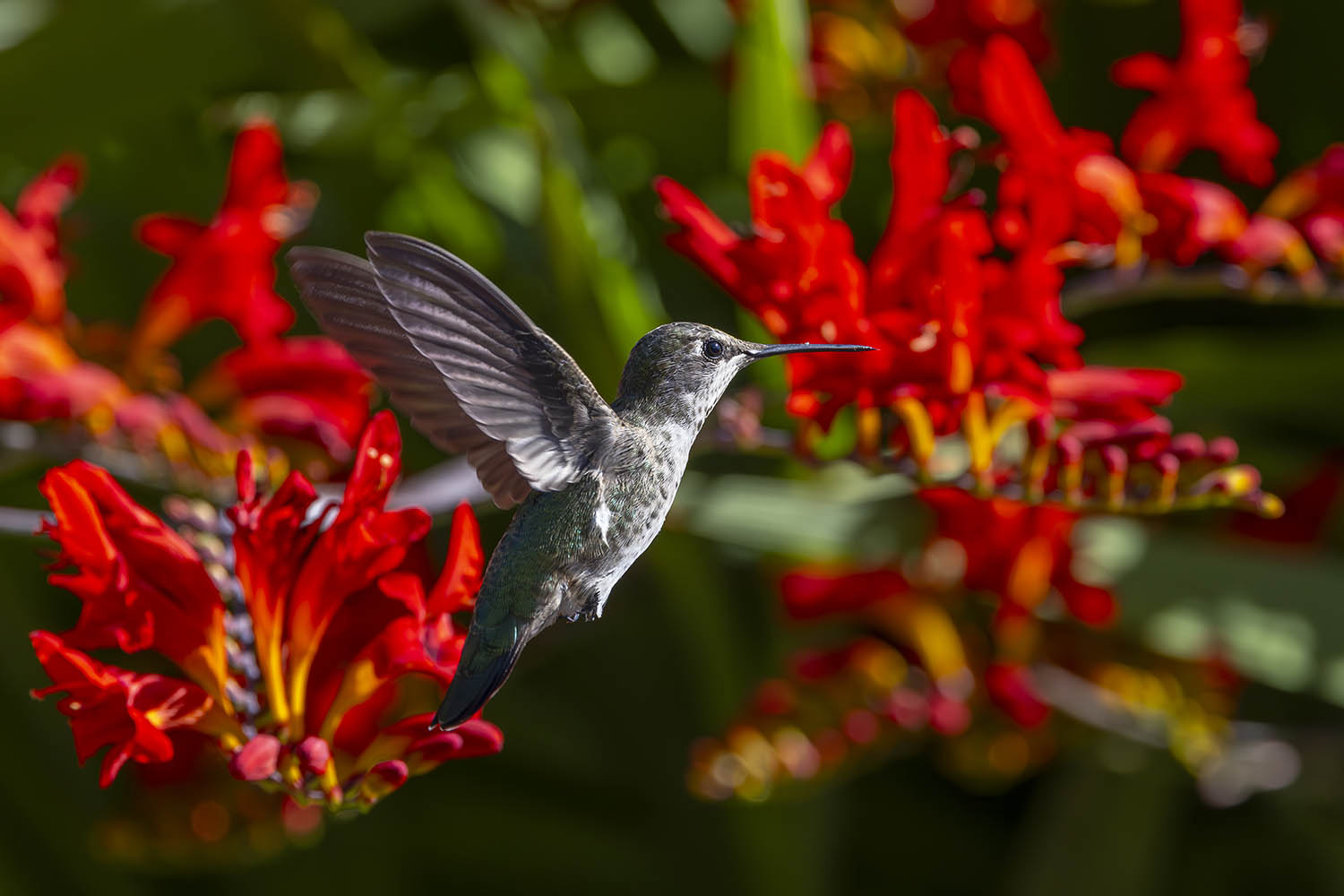MIKE RALEY WPTF Weekend Gardener
We have enjoyed growing the very colorful Crocosmia-“montbretia” or “Coppertips”- a summer-blooming flower that reminds me of a miniature gladiola. Crocosmia grows from corms which are sort of like bulbs that store nutrients. Crocus, Dalias, Anemones, and Gladiolus do too. We have had them in our landscape for decades. This flower grew abundantly in Sweet Melissa’s grandparents’ landscape in Pittsboro and she transplanted a few bulbs to our yard. The few are now many. Melissa’s paternal grandparents, Marvin and Myrtle Reeves were special people. Everyone who knew them said so. That makes our crop of Crocosmia extra special.
The Crocosmia is a native of South Africa and not North Carolina. There are seven species of Crocosmia, if I count correctly, many cultivars and a few hybrids according to N.C. State University horticulturalists. I have normally seen this bulb, including Melissa’s grandparents, in a “fiery” red-orange color. There are also yellow varieties. It is a hybrid variety and is appropriately known as Crocosmia “Lucifer”! It is safe to say this variety in mass will light up your garden like a brush fire, if it is content. One of my very learned horticulture friends told me this was awarded the Award of Merit by the Royal Horticultural Society. I would give it the “Weekend Gardener” award too! There are varieties like “Dixter Flame” which is much smaller than “Lucifer” and Golden Fleece. This variety has golden, star-shaped flowers.
Crocosmia loves full sun and blooms prolifically when planted there, but will tolerate partial shade. Like just about every plant I have encountered, it prefers well-drained soil. The sunniest part of our yard is in the front and it has a slight slope to the grade. That is where our Crocosmia resides, and they have been coming back year after year and will eventually naturalize in your yard. I like low maintenance and Crocosmias are just that. Plant corms 2 to 3 inches deep, maybe 3 inches apart in spring or fall. Add a little organic matter to clay or sand.
If you follow the rules, Crocosmia does need some maintenance. Cut off the bloom when it fades. Proper deadheading will ensure more blooms. You should let the leaves die back. This will allow the corms to store energy. Later you can cut the foliage to the ground.
Most gardeners are into dividing bulb flowers and those with corms should find time in spring for this chore. Recommend tackling this task every 3 to 4 years. And since we live in the south, provides perfect opportunity to carry on the tradition of pass-along plants.
We always love a plant that can be added to a pollinator garden and Crocosmia is just such a flower. They will attract hummingbirds, of course, bees, and certain types of butterflies. They are also a good choice for a perennial border and container garden.
Spider mites are about the only insect pest we hear about that seems to attack Crocosmia. This plant is considered deer-resistant too.
Once in a great while, your Crocosmia may have to deal with a fungus.
We just let ours grow and thrive or not. It’s every plant for itself in my yard. So plant some “other worldly” “cosmic” Crocosmia and think of Melissa’ grandparents every time you see them. That’s what I always do.
